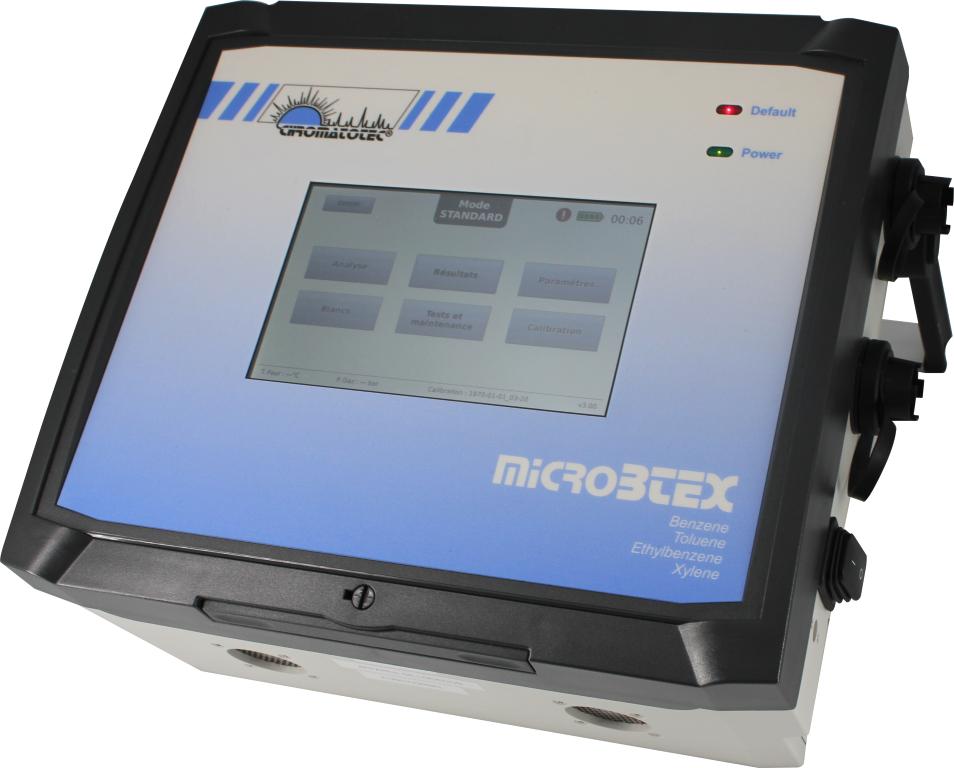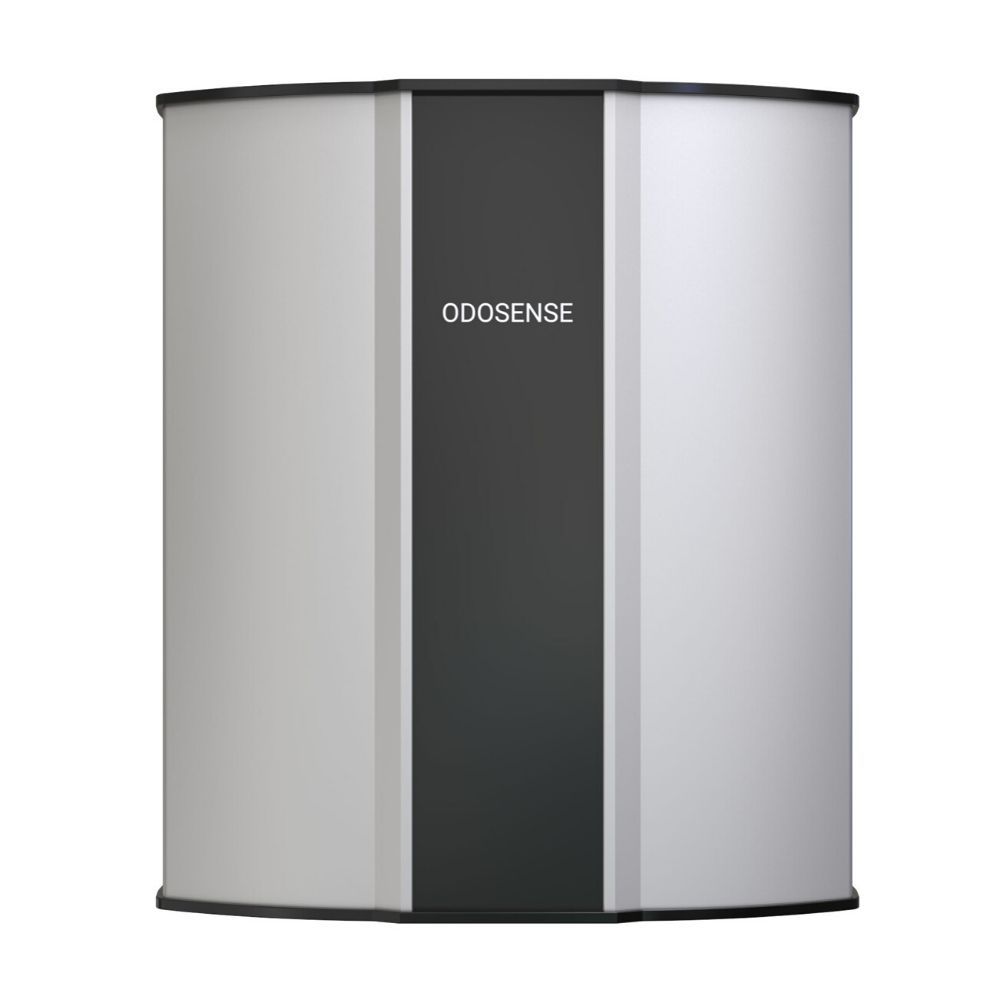
Odor Chromatographs are specialized analytical instruments designed to measure the intensity, quality and composition of odors. These devices are a combination of gas chromatography and olfactometry, two well-established analytical techniques, which provide a powerful tool for the measurement of volatile organic compounds (VOCs) and odorous substances. The main objective of odor chromatographs is to analyze the odor characteristics of various samples, including air, water and soil. These instruments are essential for the assessment of environmental impact, product quality control, and the resolution of odor complaints. Odor Chromatographs offer a range of benefits over traditional olfactometry equipment, including increased accuracy, consistency, and the ability to quantify and identify individual odor-active compounds. Whether you are an environmental consultant, a manufacturer or an odor control specialist, an odor chromatograph can provide you with the olfactometry equipment you need to get the job done.



Home » Air quality monitoring » Odor Chromatographs
An odor chromatograph is a specialized piece of equipment that is used to analyze and measure the volatile organic compounds (VOCs) in air, water, or soil. It works by combining the principles of gas chromatography and olfactometry to provide a comprehensive analysis of the odors present in a sample. This type of equipment is often referred to as an olfactometer or olfactometry equipment and is used to measure and quantify the odor characteristics of a sample. The goal of an odor chromatograph is to provide a detailed analysis of the odor profile of a sample in order to identify and quantify the different VOCs that contribute to the overall odor of the sample.
Gas chromatography olfactometry (GCO) is a specialized type of gas chromatography that involves the use of human testers, or “sniffers,” to detect and identify odors in a sample. In traditional gas chromatography, the sample is analyzed using a detector that measures the chemical composition of the sample based on its physical properties, such as mass or electrical conductivity. In contrast, GCO uses human testers to evaluate the odor of the sample, which can provide a more nuanced understanding of the sample’s composition. GCO is often used in applications such as perfumes, fragrances, and food flavorings, where the odor of the sample is a critical factor in its quality and perceived value.
Odor chromatographs are specialized equipment used to analyze and quantify odors in various environments. By combining the principles of gas chromatography and olfactometry, odor chromatographs provide an accurate and reliable method for analyzing and characterizing odors. The benefits of using an odor chromatograph for odor analysis include the ability to quantify and identify odor-causing compounds, evaluate the efficacy of odor control methods, and monitor compliance with odor regulations. The use of odor chromatographs in industries such as food and beverage, waste management, and environmental monitoring provides valuable information for improving odor management strategies and ensuring a safe and pleasant environment for the community.
When looking for an odor chromatograph for effective analysis, there are several key features to consider. These include:
These are the key features to look for in an odor chromatograph for effective analysis.
An odor chromatograph measures odor intensity through a combination of gas chromatography and human sensory evaluation. The gas chromatography component of the odor chromatograph separates the volatile organic compounds (VOCs) in the sample, and these VOCs are then evaluated by a trained human sensory panel. The panelists use a standardized scale to rate the odor intensity of the VOCs, and the results are then combined with the chromatographic data to provide a comprehensive analysis of the odor profile and intensity of the sample. The combination of gas chromatography and human sensory evaluation provides a highly accurate and reliable method for measuring odor intensity.
The use of an odor chromatograph in the workplace can improve safety and protect health by accurately measuring and quantifying the levels of odor-causing compounds present in the air. This allows employers to determine if the levels of these compounds are within safe limits and make necessary adjustments to improve air quality and reduce the risk of health problems for employees. The odor chromatograph also provides a reliable and objective method for assessing and monitoring the effectiveness of odor control measures, ensuring that the workplace remains safe and healthy for all employees. By identifying and addressing potential odor hazards, the use of an odor chromatograph can help prevent respiratory problems, headaches, and other health issues caused by exposure to harmful chemicals in the air.
The cost of an odor chromatograph can vary depending on the features and capabilities of the instrument. Some of the factors that can affect the cost include the type of sensors used, the precision of the measurements, the number of samples that can be analyzed at once, and the level of software integration and automation.
Inteccon offers a range of odor chromatographs to meet the needs of various industries and applications. Our odor chromatographs are designed to provide accurate and reliable measurements of odor intensity, and are equipped with advanced features to ensure effective analysis and data management. Whether you need a simple and affordable instrument for basic odor analysis, or a highly sophisticated system for complex applications, we have an odor chromatograph to meet your needs.
Oizom Instruments is a leading company in the field of smart air quality monitoring solutions. They use sensor-based hardware to provide data-driven environmental solutions that enhance decision-making and improve air quality. With a strong global presence in over 50 countries, their solutions have been implemented at 1000+ locations, positively affecting the lives of over 23 million people. Choose Oizom for reliable and effective monitoring of your city’s air quality and take the first step towards a cleaner environment.
Odosense is a cutting-edge e-nose based odour monitoring system designed to track various odourful and toxic gases. The system is designed to continuously detect, measure, and monitor the presence of gaseous contaminants and is ideal for use around landfill sites, wastewater treatment facilities, fertilizers, paper-pulp industries, and soil-treatment sites. Odosense measures odourful parameters such as Sulfur Dioxide (SO2), Hydrogen Sulphide (H2S), Ammonia (NH3), Methyl Mercaptan, TVOC, Formaldehyde (CH2O), Nitrogen Dioxide (NO2), Chlorine (CL2), Temperature, and Humidity. The device uses innovative e-breathing technology for higher data accuracy and can be powered by solar energy. It is network agnostic, compact, and weatherproof, with the ability to transfer real-time data through various communication modules. The Odosense system is equipped with automatic firmware upgrades and remote calibration capabilities, making it the ideal solution for odour monitoring.
Chromatotec is a group of companies that specializes in the manufacturing and sales of specialized gas analyzers. The company has a range of products including Airmotec for VOC analysis in air and water, Chroma for impurities in gas or air, and Medor for sulfur analysis in air, natural gas, or biogas. Chromatotec also offers turnkey units for gas processes. With its presence in the US, Europe, and Asia, the company provides sales and service support to customers globally.
Chromatotec offers an online chromatograph that analyzes total sulfides and other compounds such as SO2, CS2, H2S, mercaptans, and sulfides, using the flame photometric detector (FPD) principle with hydrogen/air as the carrier gas. The chromatograph detects compounds at a range of 4 ppb to 5 ppm (low range) or 100 ppb to 100 ppm (high range) with a detection limit of 7 ppb. The chromatograph features a robust, high-resistance capillary column and is compliant with ISO standard 19739:2004. The instrument includes an integrated computer with a screen for data visualization and control, as well as VistaCHROM software for data recording, calculation, and export. The chromatograph can be calibrated using permeation tubes or gas cylinders and has options for analog outputs, modBus output, and accessories such as nitrogen generators and zero air.
Chromatotec offers an online chromatograph for the continuous analysis of odor-causing sulfur compounds. The product utilizes a patented electrochemical cell-specific detection principle to measure compounds such as H2S, TRS, DMS, Mercaptans, and THT at both ppm and ppb levels. This chromatograph is ideal for use in a variety of industries, including fermentation processes, defense perimeters, deodorizing processes, wastewater treatment plants, refineries, petrochemicals, natural gas transportation lines, and more. The chromatograph features a robust metal capillary column and low maintenance, with a cycle time of 600 seconds for standard configuration. The product includes an integrated computer with a screen for data visualization, as well as dedicated VistaCHROM software for recording, viewing, and analyzing data. The chromatograph can be calibrated using permeation tubes or gas cylinders and offers optional 4-20 mA or Modbus outputs. Additionally, the product is compatible with optional nitrogen generators, zero air, and multiplexers.
The online chromatograph is designed for continuous analysis of hydrogen sulfide (H2S) levels using a cell-specific electrochemical principle. This model is ideal for monitoring and verifying H2S levels in various applications such as catalyst protection, emissions monitoring, chimney monitoring, environmental monitoring, and total sulfide analysis. With a detection range of 5-1000 ppb or 1-1000 ppm and a cycle time of 120 seconds for H2S and TRS, this model provides accurate and reliable results. The low-maintenance design features a robust high-resistance metal capillary column and does not require sensor replacement or special maintenance. The integrated computer and VistaCHROM software provide data visualization, instrument configuration, and data analysis capabilities. The chromatograph can be calibrated using permeation tubes or gas cylinders and has the option for analog outputs 4-20 mA or modBus output. Optional accessories, such as nitrogen generators and multiplexers, are also available to enhance its performance.
Online chromatograph for continuous analysis of sulfur compounds in natural gas and gaseous fuels using the cell-specific electrochemical principle for sulfur compounds in ppm and ppb levels. Ideal for monitoring processes in the petrochemical industry, transportation of natural gas, industrial processes, and more. This chromatograph utilizes a long-lasting patented electrochemical wet cell for the detection of sulfur and mercaptan compounds with a detection range of 5 ppb to 1000 ppb or 1-1000 ppm. It meets industry standards such as DIN 51855/7, ISO 19739:2004, and ASTM D 7493-08. With a robust metal capillary column and low maintenance technology, this chromatograph has an integrated computer with a screen for data visualization and instrument configuration. The VistaCHROM software allows for data recording, viewing, and calculation, and the instrument can be calibrated using permeation tubes or gas cylinders. Optional accessories include nitrogen generators, zero air, and multiplexer for multiple point measurements.
Tel +1 561-912-9809 / 561-9112-7201
E-mail [email protected]
6590 W Rogers Circle Suite# 11&12
Boca Raton – FL 33487
+1 561-912-9809 / +1 561-912-7201
[email protected]
6590 W Rogers Circle, Suite #11&12
Boca Raton, FL 33487